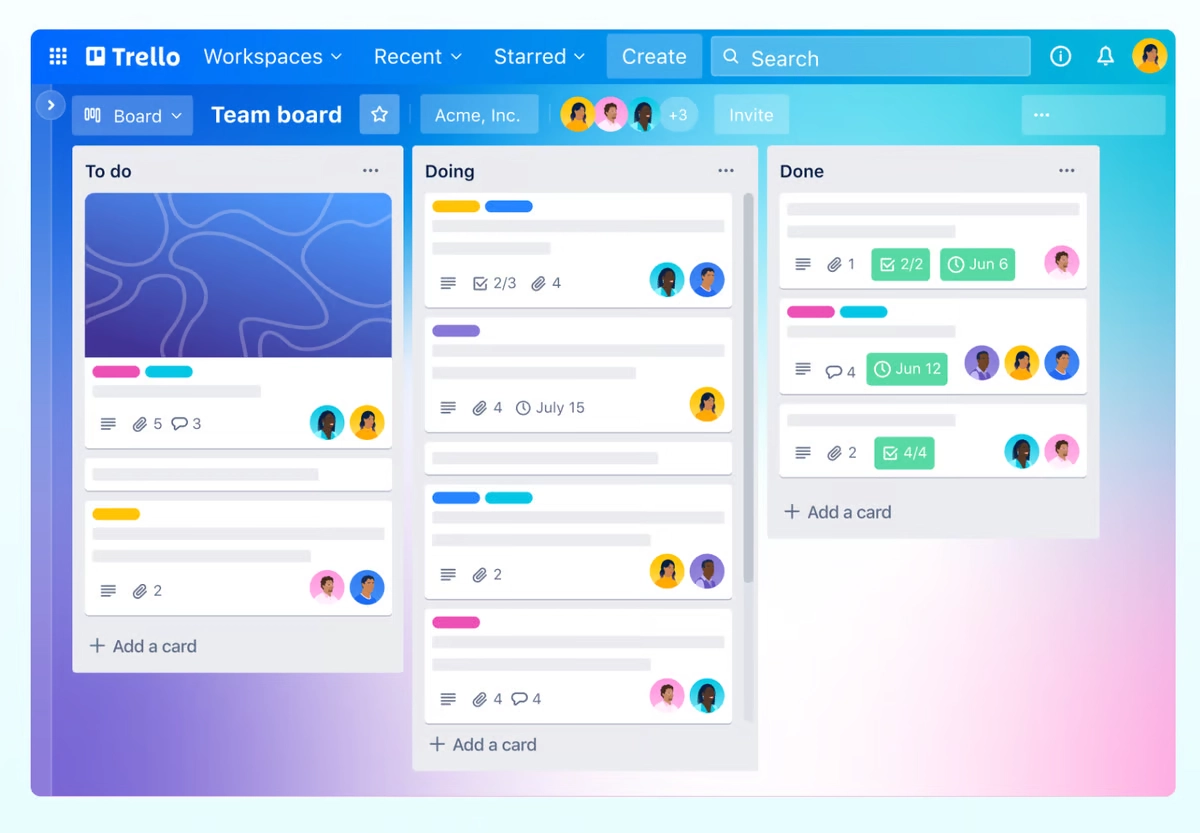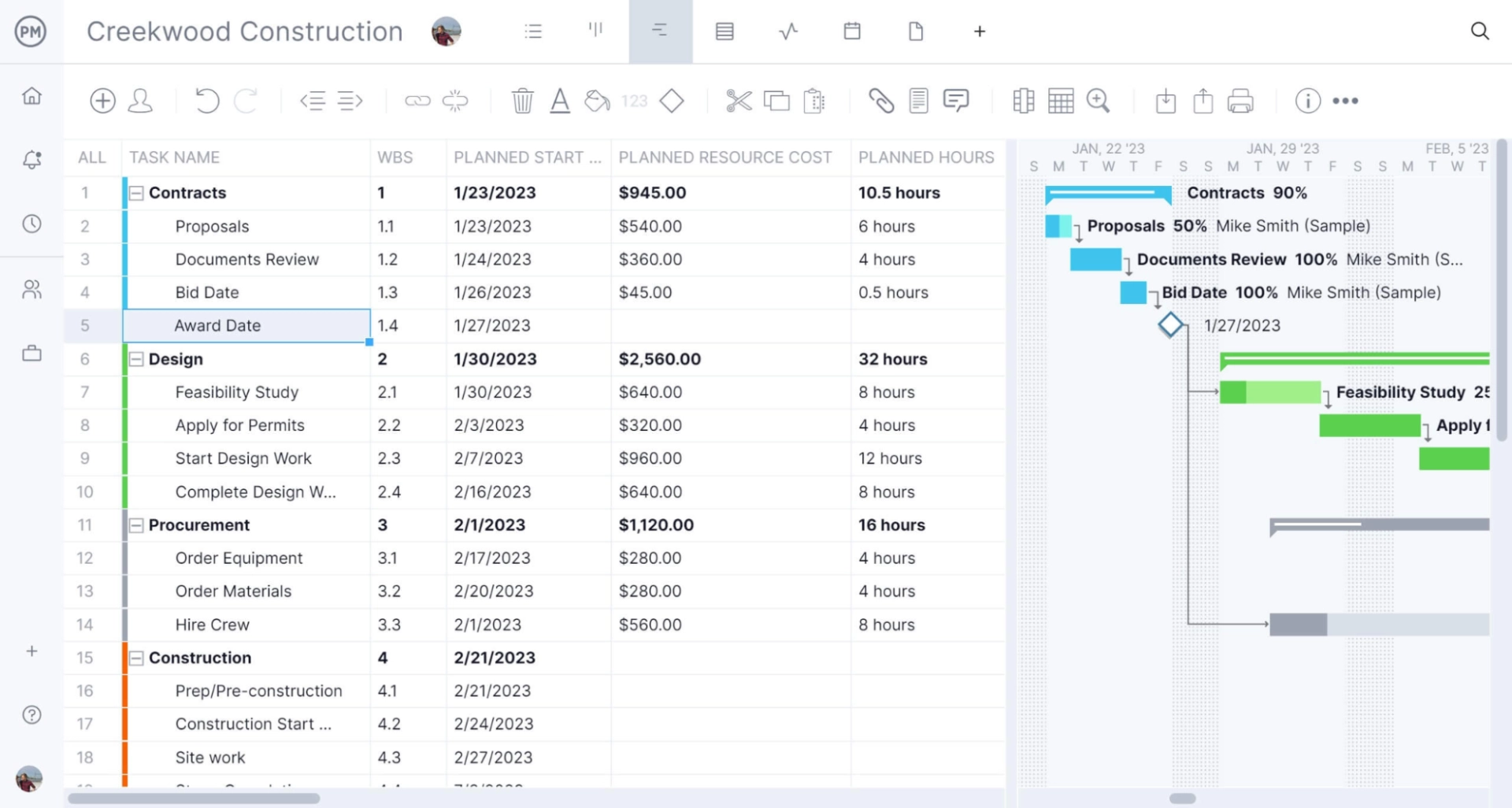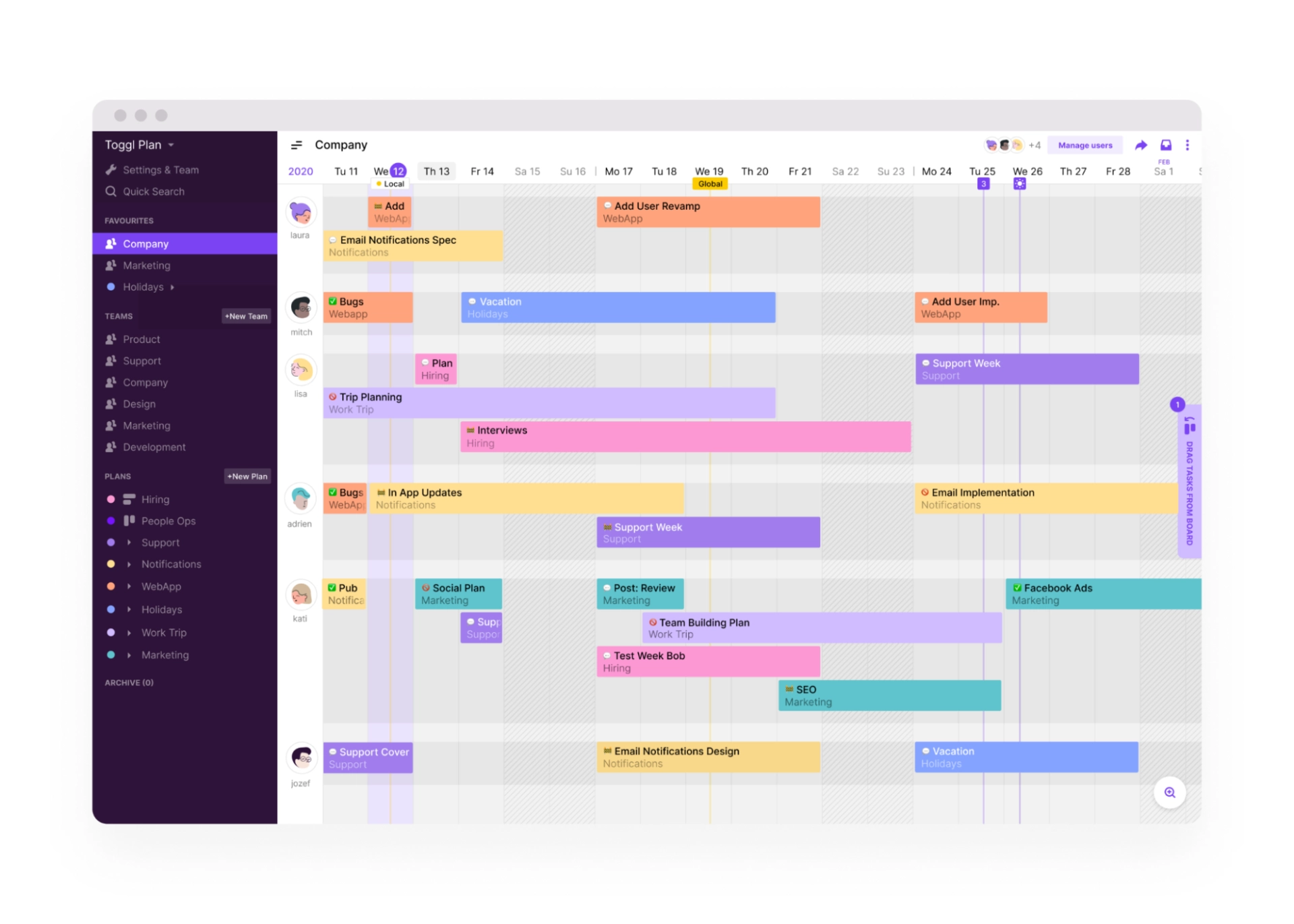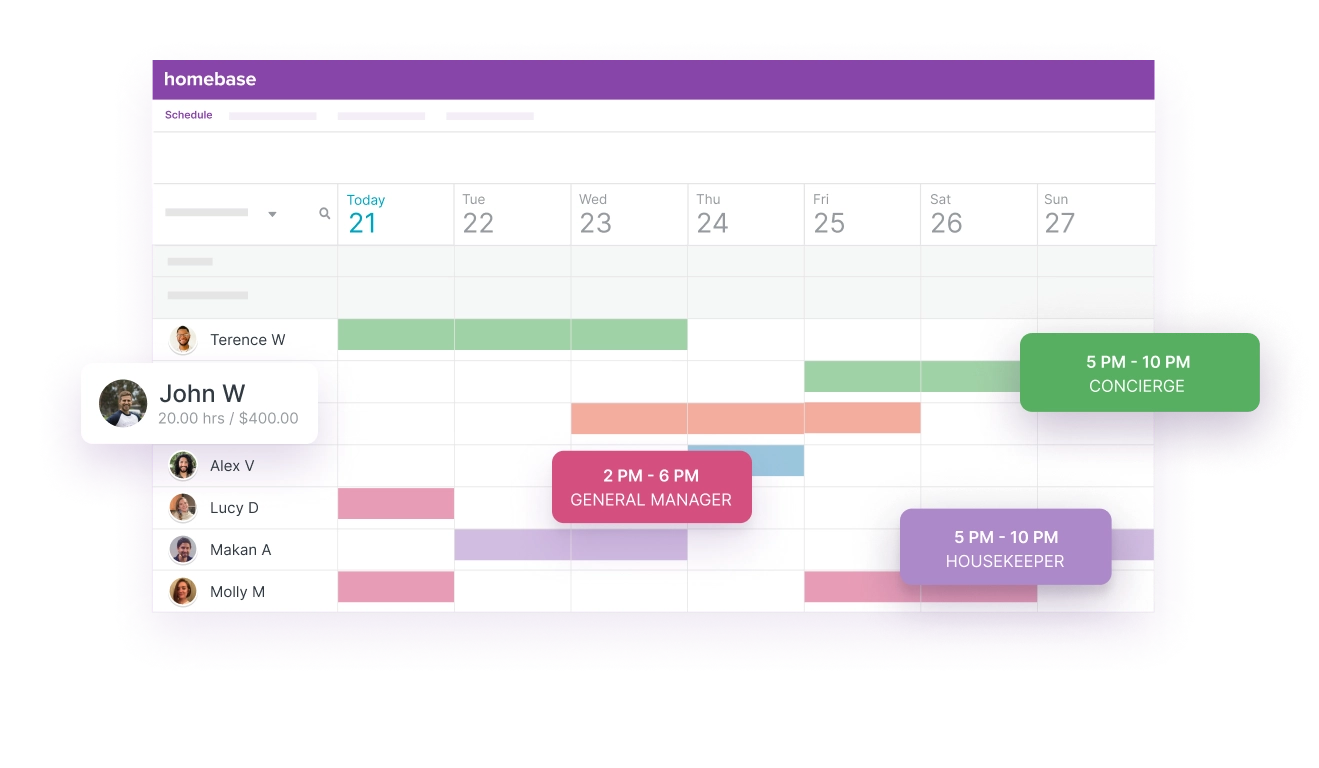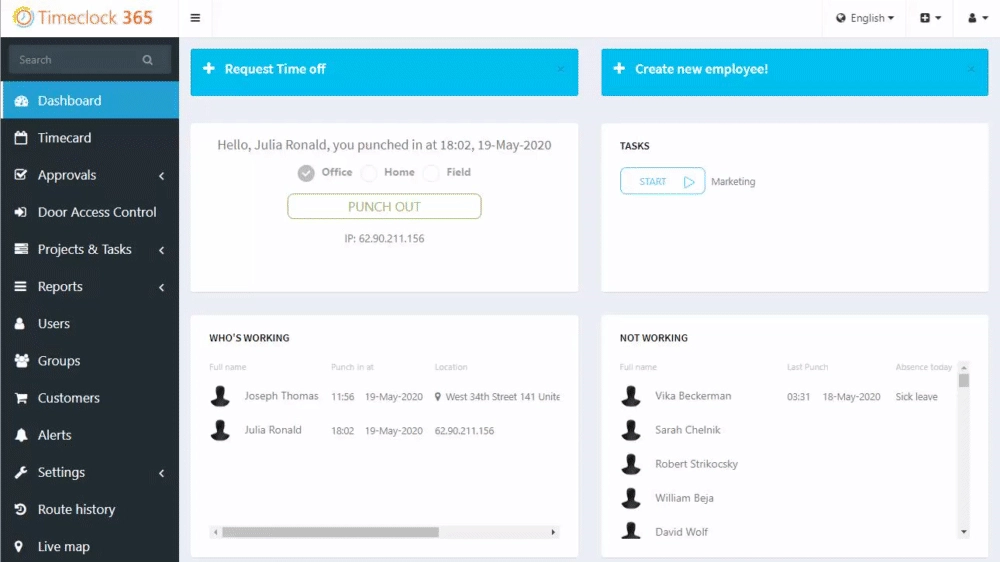Two-thirds of businesses admit that they don’t always deliver projects on time. This isn’t surprising, considering that 52% usually don’t baseline their schedules.
Well-organized schedules can make or break companies, especially in small teams with few others to pick up the slack.
When your team’s schedule is well-planned, they can fit everything into their week to meet deadlines without feeling burned out.
While software can help with scheduling, many project management tools like Basecamp are too complex for small teams. Packed with collaboration features and project tools, they’re often too much for teams that want to schedule their time better.
Let’s look at why Basecamp might not be the best tool for small teams and dive into the top six tools that do a far better job.
Why do small teams need a good scheduling tool?
When working in a small team, juggling complex projects and varied daily task lists can be tough.
A good scheduling and task management tool is the key to efficient resource allocation and an organized workflow.
Here’s why.
1. Manage workload effectively
Imagine how much easier it'd be to manage and schedule everything on your team’s plate if you could see all tasks and projects in one centralized location.
Scheduling tools give you a 360-degree overview of your team’s time and workload so you better understand task priority and worker availability. This makes assigning tasks to the right people in the right order simpler.
And it’s not just about visibility.
Good scheduling and work management tools automate recurring tasks and notifications to reduce the administrative burden of team organization.
Plus, with tools like Motion, you have the flexibility to respond to changes in real time. If priorities change or unexpected incidents occur, Motion will automatically reschedule your team to accommodate these alterations.
And you get actionable insights. With your workflow centralized on a single platform, these tools use analytics functionalities to show you how to better manage your workload and streamline task management.
2. Make better use of resources
In a recent study, 43% of workers said their project teams are understaffed.
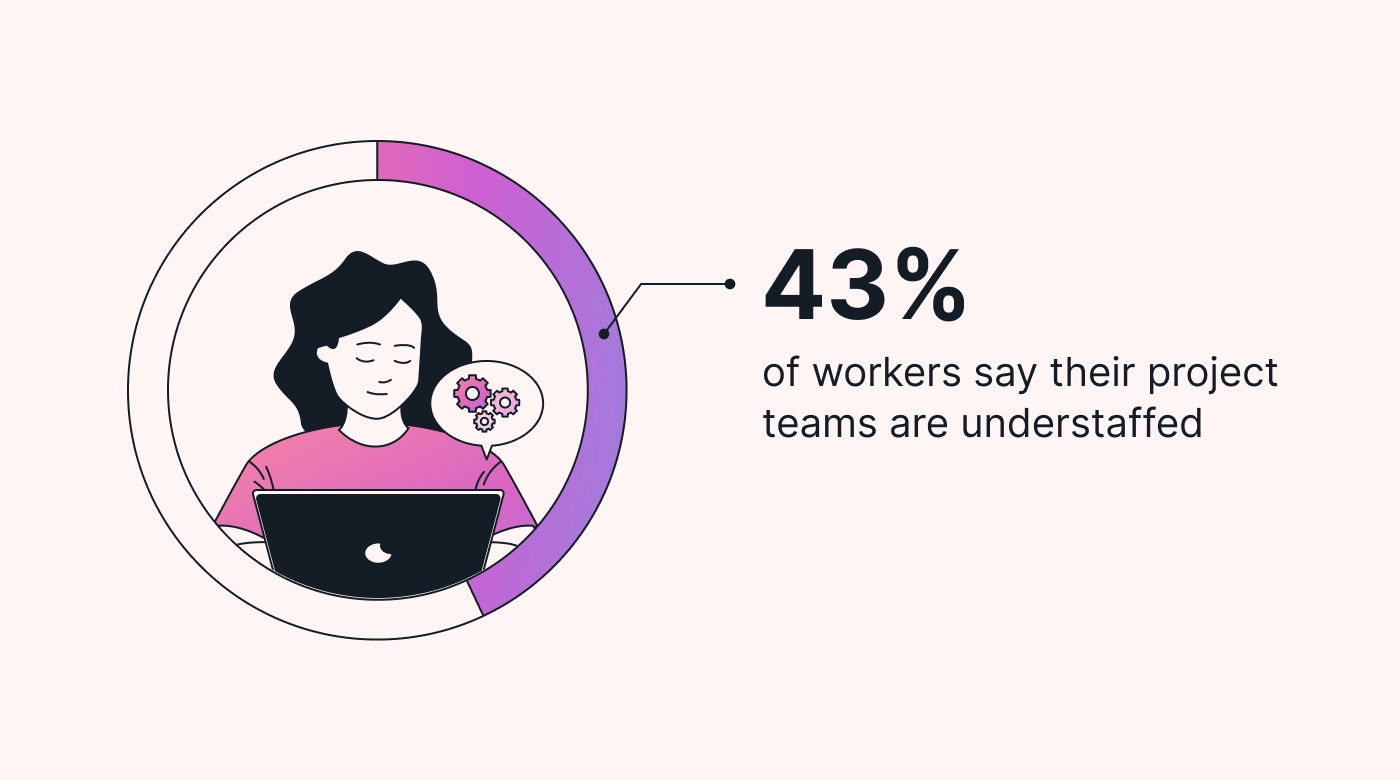 |
But is that the case? If teams are better organized, managers can allocate tasks more efficiently so that nobody feels overworked, yet everything gets finished on time.
A good scheduling tool helps you better organize the staff you have. This way, they can use their time more effectively, taking task priority and realistic availability into account.
3. Meet deadlines every time
Nearly a third of businesses admit that they struggle with unrealistic deadlines. This can lead to ineffective timelines and project delays.
With a robust scheduling tool, you can see who’s available and assign tasks based on their urgency. With tools like Motion, its powerful features automatically alert you to over-commitment, making it easier to set realistic deadlines and meet them.
With an AI scheduling tool like Motion, schedules automatically rearrange themselves if something changes, using powerful algorithms to efficiently reshuffle tasks if priorities or demands alter.
Why Basecamp isn’t the best tool for scheduling small teams
Basecamp is a popular choice for project management. But, in terms of scheduling, it’s a little lacking.
While it offers task assignment, there are limited features for advanced scheduling, such as time blocking and auto-rescheduling. If your team has complex scheduling needs or you simply want to relieve the burden of scheduling altogether, Basecamp falls short.
 |
On the other end of the spectrum, while it lacks key scheduling capabilities, it offers a comprehensive suite of project dashboards and task management features. While this might be useful for larger projects, its interface can be overwhelming for small teams looking for straightforward project management and scheduling.
Basecamp is focused more on team collaboration rather than task organization. If you simply want to get your team’s time in order, the feature overload and steep learning curve make it an expensive option when a lightweight scheduling app would work.
Top 6 Basecamp alternatives to optimize your small team’s schedules
Looking for a tool that helps schedule and organize small teams but unsure that Basecamp is for you?
Try these alternatives.
1. Motion: Best for AI-driven scheduling
Motion is the King of scheduling.
It doesn’t just help you determine how your time would be best spent. It can optimize the whole team’s schedules using powerful AI algorithms.
Motion can analyze everyone’s availability and overlay it with task urgency to determine where and when each task should fit into everyone’s day.
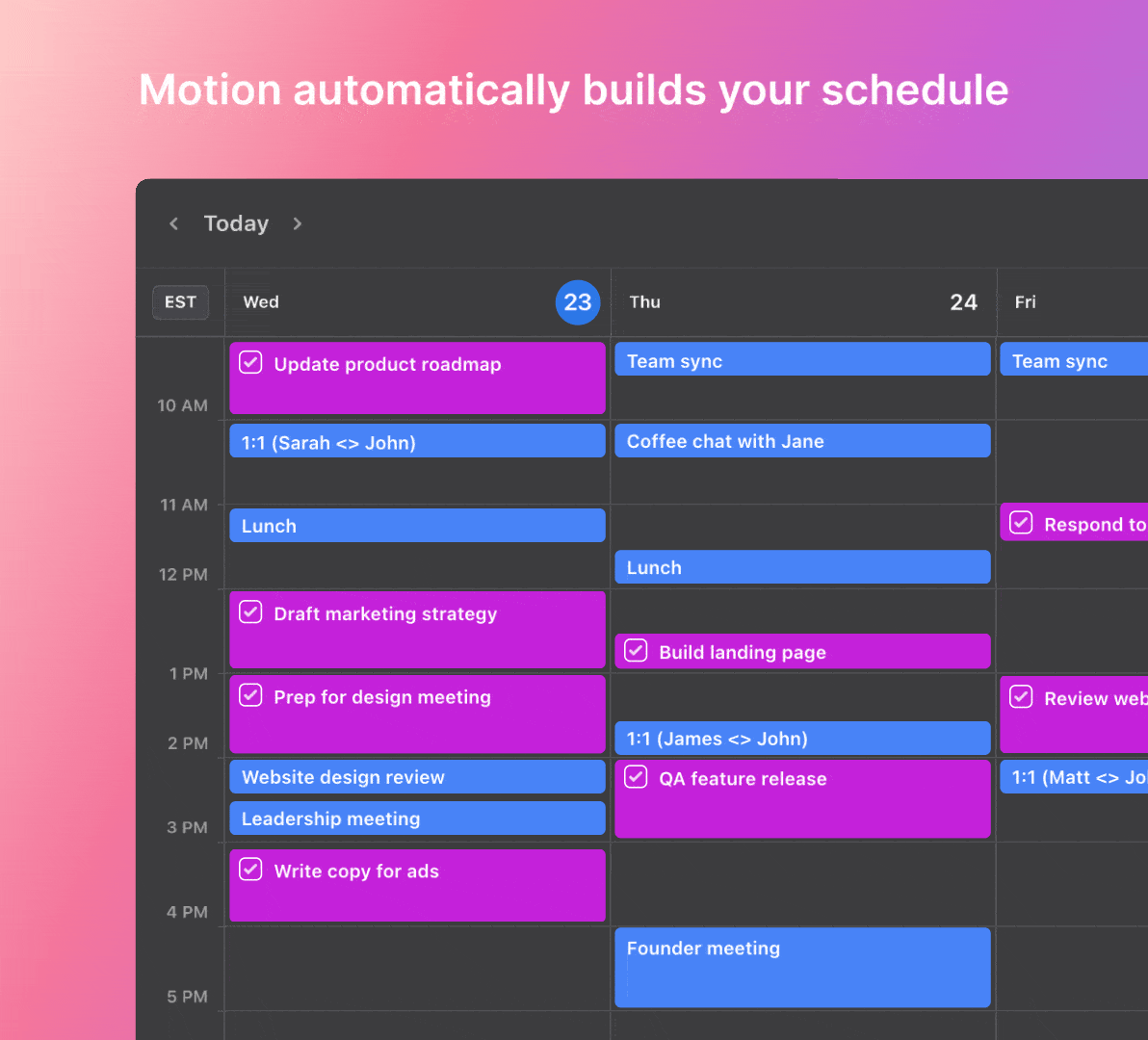 |
Not only that, but Motion is also designed for flexibility. If something changes, priorities shift, or there’s an unexpected problem, the AI will automatically reschedule tasks so everything’s done on time and nobody’s overworked.
How Motion benefits small teams: You might have to wear many hats if you work in a small team. Priorities shift, and team members often jump on to different tasks if something unexpected happens. Motion accommodates this by giving you a truly optimal but highly flexible schedule. Even if a meeting overruns or a project needs extra attention, Motion works out how to fit everything into your team's schedules without overcommitting anyone.
Pros
- AI-powered custom, prioritized schedules for every team member
- Intelligent rescheduling if circumstances or priorities change
- Over-commitment alerts to stop schedules from becoming too cramped
- Automatic updates and notifications to keep everyone on track
Cons
- Works best for small teams rather than big companies
Pricing: Motion costs $12 monthly for each team member and $19 monthly for individuals.
2. Trello: Best for Kanban-style task scheduling
Trello is a Kanban-style project management platform known for its user-friendly interface and basic automation.
It's an ideal choice for project managers and creative teams needing a centralized location to manage project tasks without the complexity of advanced features and many customization options.
How Trello benefits small teams: Trello offers Kanban-style project boards and pre-built templates that make it easy to build project timelines, assign tasks, and track progress. For teams used to Kanban-style working, Trello is straightforward and offers a range of everyday automation to help manage repetitive tasks and basic workflows.
Pros:
- Intuitive, visual Kanban boards reduce the learning curve
- Lots of pre-built templates to build project workflows quickly
- Basic automation to streamline workflows
- In-card communication to centralize project discussions
Cons:
- Limited advanced features for larger teams
- Limited project views
Pricing: Trello offers various pricing plans. A free plan with paid-for options costs $5 per user per month.
3. Microsoft Planner: Best for Microsoft users
Microsoft Planner is a compelling alternative for teams already paying for a Microsoft 365 Business plan.
It offers a centralized platform for planning projects, scheduling to-do lists, and sharing tasks with your team. Its basic automation capabilities allow you to schedule recurring tasks, automate basic workflows, and update relevant team members without manual intervention.
How Microsoft Planner benefits small teams: Planner integrates with Microsoft Teams and other 365 apps to ensure a smooth workflow across your ecosystem. You can create a plan and easily add tasks to each team member’s calendar, synchronizing meeting notes and supporting documents to keep everything in one place.
Pros:
- Seamless integration with Microsoft 365
- Intuitive user interface with visual status charts
- Recurring tasks to reduce scheduling admin
- Mass updates to keep the whole team on the same page
Cons:
- Lacks advanced scheduling automation
- Only offers basic collaboration tools
Pricing: Planner is included in Microsoft 365 Business plans, which start at $6.00 per user per month.
4. Toggl Plan: Best for client involvement
Toggl Plan is a simple work management platform for small teams. It focuses on project planning, resource utilization, and task management, offering a highly visual way to plan and schedule work.
Its intuitive interface allows you to visualize workloads across Kanban and timeline views, with options for client involvement to centralize project communications.
How Toggl Plan benefits small teams: Toggl Plan is designed for small teams, with a clean interface that’s easy to learn. But what sets it apart is the ability to loop clients into the schedule to keep them updated with project progress and discuss details in one central location. With shareable timelines, clients and stakeholders stay informed with minimal effort.
Pros:
- Intuitive interface with color-coded timelines
- Seamless time tracking integration with Toggl Track
- Easy sharing of project timelines with clients and stakeholders
- Project planning features with goals, milestones, and resource allocation
Cons:
- Not designed for larger teams, so you may need to switch if your business scales
- It’s relatively expensive compared to other scheduling tools
Pricing: Toggl Plan starts at $8 per month per user.
5. Homebase: Best for scheduling and tracking shifts
Homebase is an all-in-one tool for businesses to manage time tracking, scheduling, and payroll.
It’s ideal for teams looking for a platform to organize resource management, assign working hours, and track shifts.
How Homebase benefits small teams: Homebase simplifies scheduling and time tracking for teams who work on shifts. Not only is it a centralized platform to plan and assign shifts, but it also turns any device into a time clock so that workers can track and manage hours from their mobiles. As an all-in-one platform, Homebase also allows you to manage payroll for these hours within the app itself.
Pros:
- All-in-one solution for planning, tracking, and paying for shift work
- Detailed reporting for better resource management
- User role access for varying management levels
- Flexible pricing options for different business sizes
Cons:
- There are steep pricing jumps as you upgrade
- Limited HR features with lower-tier plans
Pricing: Homebase offers a Basic plan for free, with premium plans starting at $20 per location per month for unlimited users.
6. Timeclock 365: Best for remote time tracking
Timeclock 365 is another employee scheduling platform designed to help you manage your team’s time and expenses.
Ideal for remote teams, the web-based platform helps you with real-time tracking of work hours, attendance, and expenses, all in one place. On top of its scheduling and task-tracking features, it offers HR and compliance features to align and organize remote teams in one cloud-based solution.
How Timeclock 365 benefits small teams: TimeClock 365 offers highly accurate time-tracking tools and expense-tracking capabilities in a way that suits remote teams. Its intuitive interface and detailed reporting make it easy for managers to efficiently manage remote workers, coordinate resources, and compensate everyone correctly.
Pros:
- Easy for workers to click in and out from their mobiles
- Straightforward approval workflows to streamline requests
- Detailed reporting provides actionable insights for improvement
- HR capabilities for managing time off and employee documentation
Cons:
- Some users complain that support is slow
- Doesn’t support rotating shifts well
Pricing: Timeclock 365 starts at $3 per user per month.
How to choose a scheduling tool for your small team
Don’t get confused by all the advanced options. Consider these three things when looking for a scheduling tool for your small business.
1. Price
Pick a tool that fits your budget.
Look at how pricing plans scale to determine if they are affordable for your company as you grow. After all, you don’t want to keep migrating to new tools as your business upgrades.
2. Features
Don’t get sucked into fancy features you don’t need.
Consider features that bring value to your team, ensuring you pick a tool that fits your business model.
If you handle complex projects, look for project management tools. You might need a time-tracking tool if your team works in shifts.
3. Ease of use
The easier a tool is to learn, the quicker you get value from it.
This is especially important to think about if your team isn’t tech-savvy.
Choose a platform that allows your team to onboard quickly without making too many mistakes initially.
Scheduling without the complexity
It’s easy to fall into the trap of thinking you need a heavy-duty project management software to schedule your team’s tasks and time. This isn’t always the case — especially if you’re a small team.
A lightweight scheduling app can offer you the benefits of better organization without the complexity of complicated features.
It’s important to consider how your team works to pick a scheduling tool that helps you assign tasks or shifts appropriately. Otherwise, you’ll find yourself using the wrong scheduling tool, which can complicate your team’s calendars even more.
Luckily, Motion does it all. An AI executive assistant, it works to optimize schedules automatically, no matter your business model.
Looking to take the stress out of scheduling your team? Try it now for free.

Danny is a project management expert with decades of experience in writing for online audiences. He has worked both in-house and as a freelancer for several major B2B SaaS companies and tech publications. Besides writing, Danny always keen to flex his creative muscles; he has his own travel blog and also enjoys photography.

